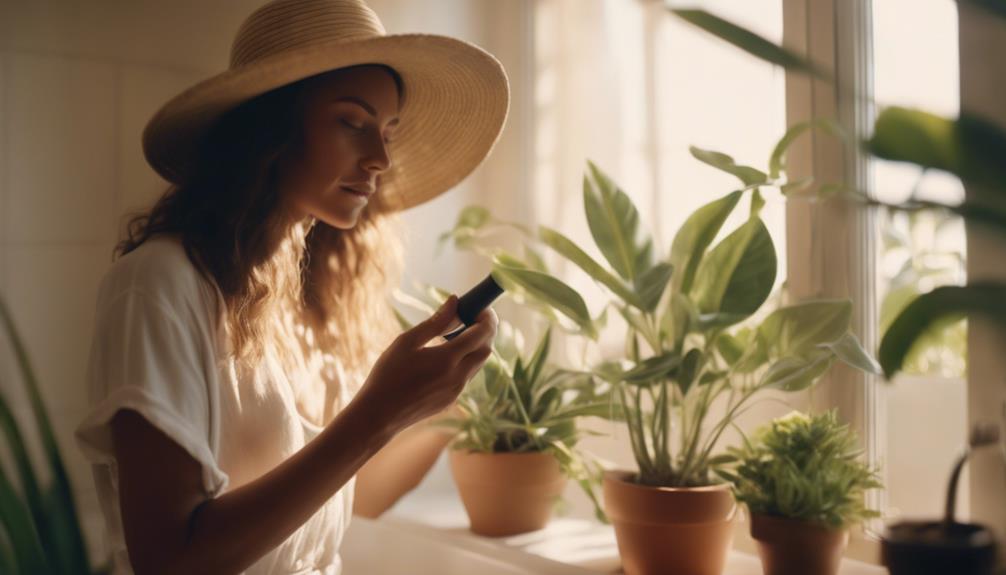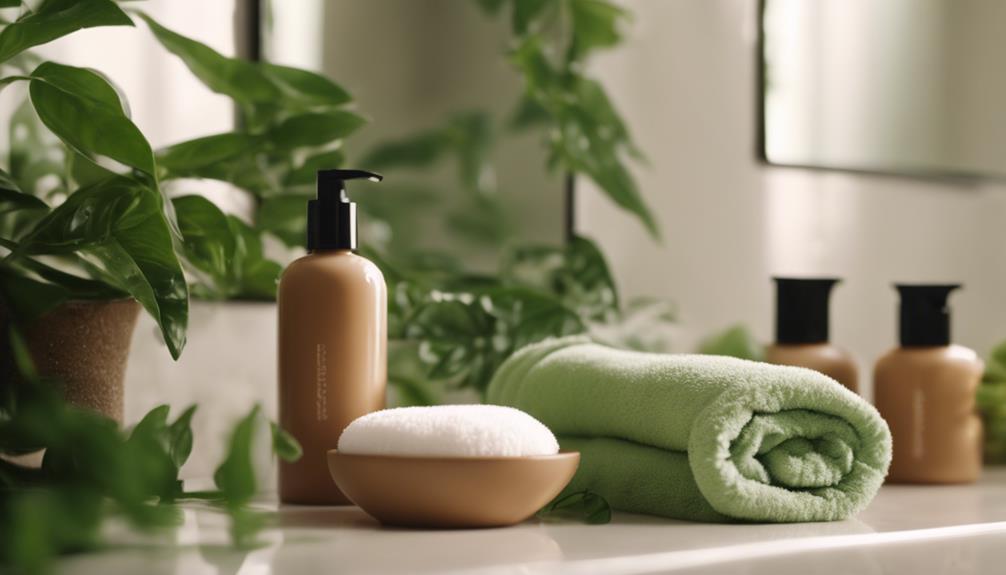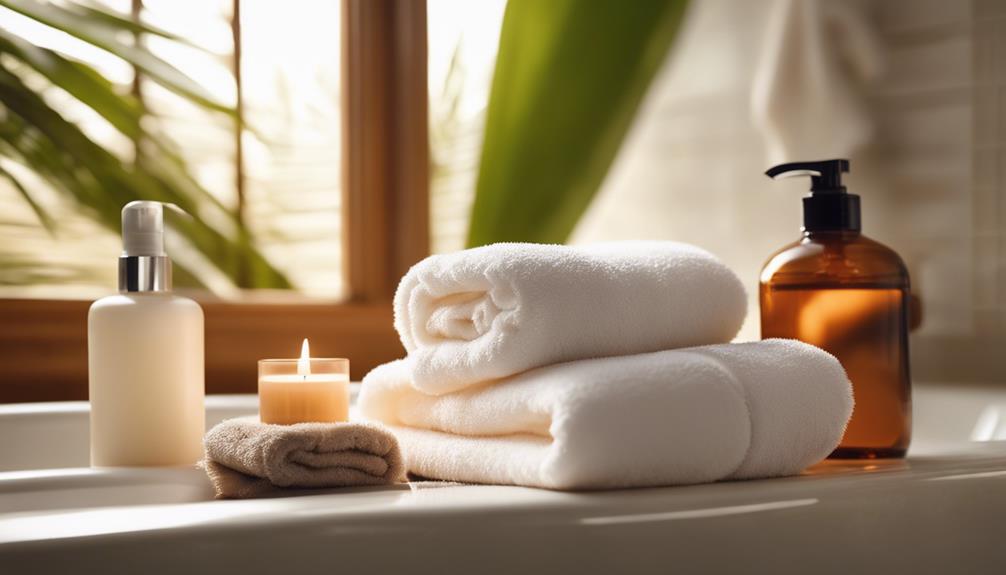To get a flawless tan at home, begin by understanding your skin type and how it reacts to sunlight. Gently exfoliate your skin to get rid of dead cells for a smoother tan application. If you are using tanning products, make sure to apply them evenly, paying extra attention to dry areas, and you can also try natural enhancers like coconut oil for a uniform glow. Follow safe tanning practices by aiming for early morning or late afternoon sun exposure and always use SPF to protect your skin. Remember to moisturize daily after tanning to keep your bronzed look. Monitoring your progress will help you fine-tune your techniques for a perfect tan. There is always more to learn! For an enhanced at-home tanning experience, consider investing in high-quality tanning equipment such as a reliable tanning bed or a spray tan machine. These tools can help you achieve a more consistent and longer-lasting tan. Also, mastering the technique of flipping is essential to ensure an even tan all over your body. Be sure to rotate and flip your body regularly to ensure every part receives an equal amount of sunlight or tanning product. With these suggestions and some practice, you can master the art of flipping and achieve a perfect tan in the comfort of your own home.
Key Takeaways
- Determine your skin type on the Fitzpatrick scale to tailor your tanning approach effectively.
- Use natural enhancers like coconut oil or green tea for even coverage while tanning.
- Apply tanning lotion with SPF generously and avoid peak sun hours for safety.
- Moisturize daily with hydrating lotions to maintain and enhance your tan.
Understanding Skin Type
Understanding your skin type is essential for achieving a perfect tan while minimizing the risk of burns or irritation.
First, determine your position on the Fitzpatrick scale to assess your sun sensitivity accurately. Pay attention to how your skin reacts to sun exposure—does it burn easily, or does it bronze? Tailor your tanning approach based on these characteristics.
Exfoliate your skin beforehand to remove dead cells for a smoother tan, and apply a hydrating lotion to lock in moisture. Focus on dry areas like elbows and knees, as they tend to absorb tanning products unevenly.
Safe Tanning Practices

To achieve a safe tan, target early morning or late afternoon when the sun's rays are less intense. This way, you minimize the risk of burning while still getting that desired glow. Always check the UV index and avoid tanning during peak hours, typically from 10 am to 4 pm. Remember to apply tanning lotion with SPF generously and rotate your position every 20-30 minutes for an even tan. Here's a quick reference table to help you remember:
| Time Frame | UV Intensity | Tanning Tips |
|---|---|---|
| Early Morning (Dawn-10 am) | Low | Apply SPF, hydrate skin |
| Late Afternoon (After 4 pm) | Moderate | Rotate positions regularly |
| Peak Hours (10 am-4 pm) | High | Stay indoors, avoid tanning |
| Post-Tan Care | Essential | Use after-sun products |
Effective Tanning Techniques

Explore various effective tanning techniques that can help you achieve a sun-kissed glow while nourishing your skin.
Start by using natural enhancers like coconut oil or green tea, applying them in circular motions for even coverage. If you're looking for a homemade solution, mix cocoa powder with your favorite lotion for a streak-free self-tanner.
Remember to avoid tanning beds, as they can damage your skin. Instead, stick to natural products that promote a beach-like glow. Always apply these products evenly and focus on areas that tend to be drier, such as elbows and knees.
Post-Tanning Care

Post-tanning care is essential for maintaining your tan and keeping your skin healthy and hydrated.
Start by rinsing off any excess tanning product after the recommended development time to avoid overdevelopment.
Follow this with daily moisturizing using hydrating lotions, which helps preserve your tan and prevents peeling.
Opt for gentle cleansers instead of harsh soaps to keep your tan looking radiant.
Avoid retinols and strong acne treatments since they can cause premature fading.
Regularly apply after-sun products to soothe and hydrate your skin.
If you want your tan to last longer, consider using tan extenders or gradual self-tanners.
Tan Maintenance Tips

Maintaining your tan requires consistent hydration and the right products to keep your skin looking its best.
Moisturize daily with a hydrating lotion to prevent peeling and maintain your glow. When cleansing, opt for gentle cleansers instead of harsh soaps to protect your tan's radiance.
Avoid using retinols and strong acne treatments, as they can cause premature fading. Regularly apply after-sun products to soothe and keep your skin hydrated.
Consider using tan extenders or gradual self-tanners to enhance longevity. Limit activities like swimming or intense workouts that may strip your tan.
Monitoring Your Progress
To guarantee your tan remains vibrant and even, it's important to actively monitor your progress throughout the tanning process. Keep track of your tanning sessions and observe your skin's reaction. Use a mirror to check hard-to-reach areas, and set timers to manage each session. Noticing any signs of burning or irritation? Take a break!
Here's a simple way to log your progress:
| Date | Time Spent | Skin Condition |
|---|---|---|
| 2023-10-01 | 30 mins | Even, no irritation |
| 2023-10-02 | 45 mins | Slight redness |
| 2023-10-03 | 30 mins | Good, hydrated |
| 2023-10-04 | 20 mins | Even, no irritation |
| 2023-10-05 | 40 mins | Slight tan |
Tracking these details helps you adjust your tanning methods effectively!
Adjusting Tanning Methods

Adjusting your tanning methods is essential for achieving the perfect tan while protecting your skin from damage.
First, monitor your tanning time and avoid overexposure to prevent burns. Use a mirror to check hard-to-reach areas, ensuring an even tan. If you notice any signs of irritation, take a break and adjust your technique.
Consider incorporating natural enhancers like coconut oil or green tea for nourishment. Track your skin's color change and tweak your products accordingly.
Incorporate foods rich in beta carotene to enhance your glow. Finally, set timers for tanning sessions to maintain control and manage exposure effectively.
With these adjustments, you'll achieve a beautiful, sun-kissed look while keeping your skin healthy.
Frequently Asked Questions
What Is the Best Type of Tanning Product for Sensitive Skin?
For sensitive skin, you should choose products labeled as hypoallergenic or specifically designed for sensitive types. Opt for natural ingredients like aloe vera and avoid harsh chemicals to minimize irritation and guarantee a smooth application.
Can I Use Makeup Over Self-Tanner?
Picture a sun-kissed glow; you can definitely use makeup over self-tanner! Just wait until your tan's fully dry, then apply makeup gently for a flawless finish that enhances your radiant skin without any streaks.
How Do I Remove Self-Tanner Stains From Clothes?
To remove self-tanner stains from clothes, act quickly. Blot the stain with cold water, apply a stain remover, and wash as usual. Avoid hot water, as it can set the stain, making it harder to remove.
Are There Any Foods That Help Achieve a Better Tan?
You might be surprised, but munching on foods rich in beta carotene, like carrots and sweet potatoes, can enhance your tan. These colorful veggies help boost your skin's natural glow and promote a sun-kissed look.
How Long Does a Spray Tan Last on Average?
A spray tan typically lasts about five to seven days, depending on your skin type and care routine. To prolong it, moisturize daily and avoid harsh soaps that can strip away the color.
Can Bronzer-Free Accelerators Achieve the Same Results as Tanning at Home?
When it comes to achieving a natural tan without using bronzer, natural tan accelerators without bronzer can be a great option. These products can help enhance the tanning process and achieve similar results to tanning at home. By using these accelerators, you can achieve a natural-looking tan without the need for bronzer.
Conclusion
Achieving a perfect tan at home is totally within your reach!
Did you know that around 30% of people experience sunburn when trying to tan? By understanding your skin type and following safe tanning practices, you can avoid that risk while still getting that golden glow.
Remember to care for your skin before, during, and after tanning to maintain your beautiful hue. With the right techniques, you'll enjoy a stunning tan without the damage.
Happy tanning!









